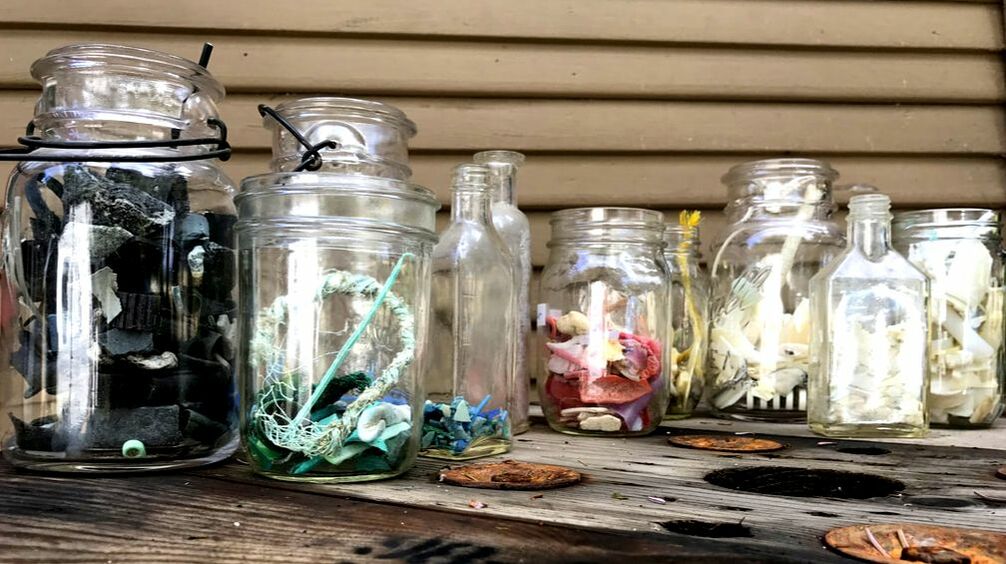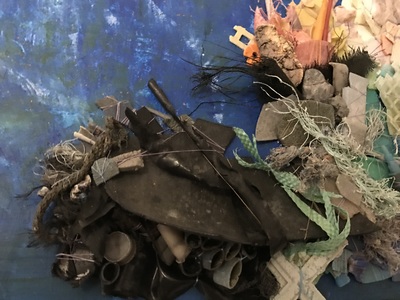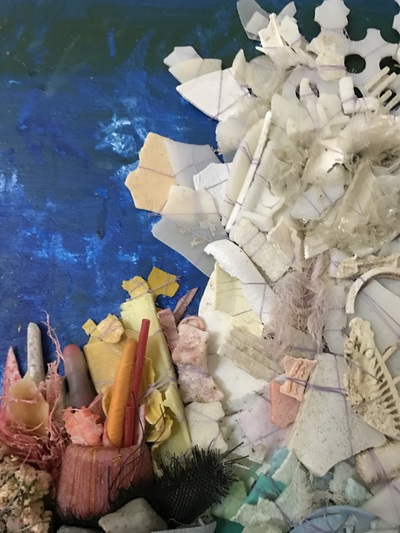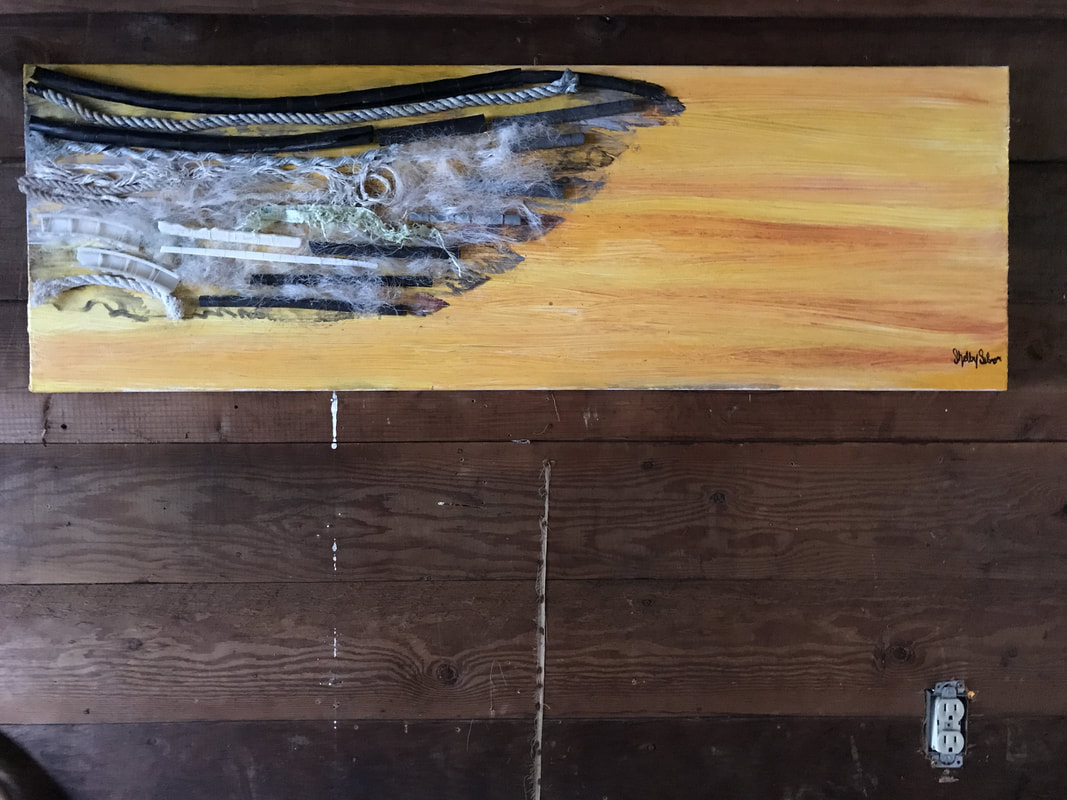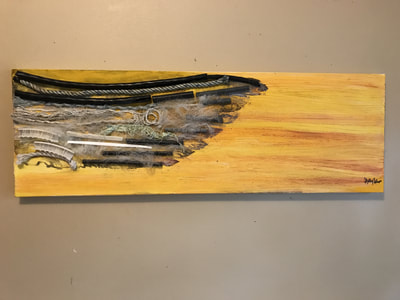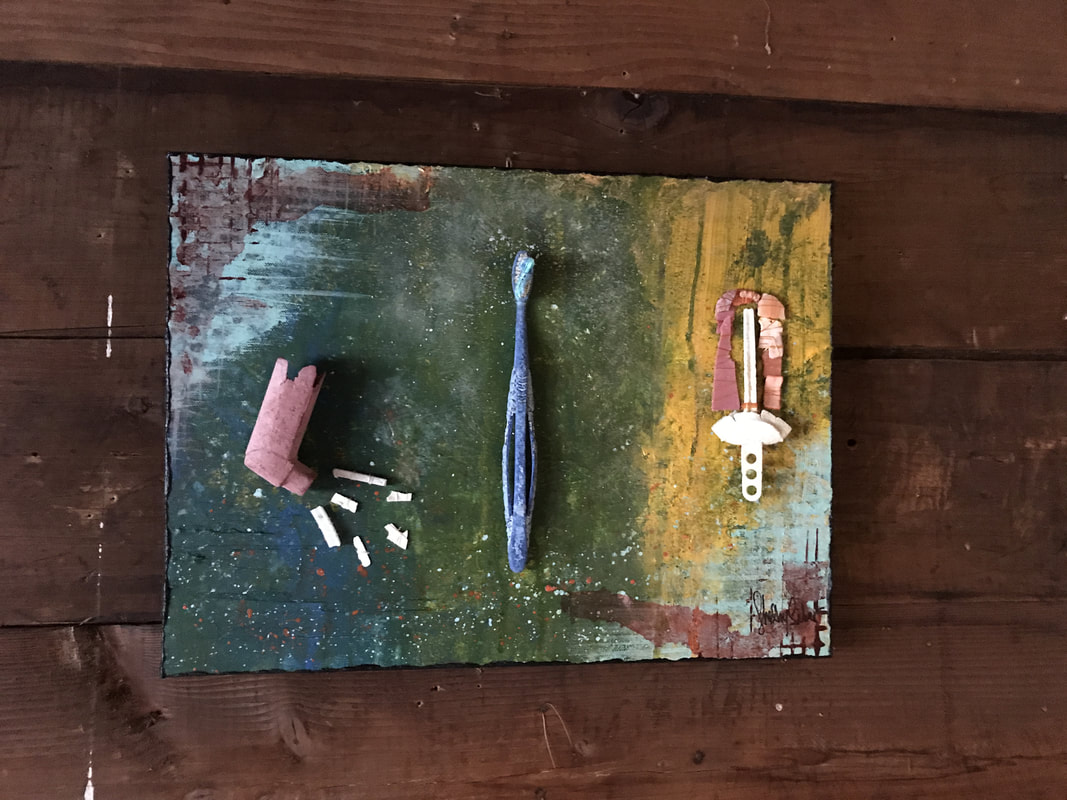Accumulate Reclamation
Collected ocean plastics in efforts to heal the sea & reclaim its natural state.
These works are made from plastic pieces which are harmful and dangerous to the marine animals who ingest and become entangled. This does not exclude humans. We are also susceptible to the ingestion of plastic via the trickle down effect, and can become entangled in rogue ghost nets as well.
Marine Animals mistake the plastic bits as food, eat, become falsely full, and die of malnutrition and or toxicity. With objects not belonging in the ocean such as nets left behind from fishing vessels, marine life of all kinds can and do become bycatch in the entrapment of ghost nets.
Ecology looks closely at the intertwined relationships between every form of life. It shines a light on how species interact with one another in a given environment, and we humans are only one of many species living in our biosphere. It makes sense that we should then include ourselves and our effects when exploring the relationships between life forms, as we are all very intimately connected.
When I say life forms I feel it important to point out that I use it in the broadest sense conceivable, where it includes the ocean as being a life form. Our oceans reach around 71% of the earth, and serve as a vital element of life for existence here on this planet.
As it stands our oceans have an unprecedented and incomprehensible amount of plastic floating in it at every depth, this effects every species living in the ocean and those who depend upon the ocean for food such as sea birds, and ourselves. Though we are beginning to see many organizations working towards the overall clean up mission, this is a very big job, and wash-ups from micro plastics and ghost netting/gear happen every day. Surfrider has been logging that Kauai alone experiences 10,000 pounds of ghostnet/gear a month washing up there, and during a class I'd taught in May 2019 seven of us counted nearly 4,000 pieces of plastic marine debris collected in 45 minutes here along the Oregon coast within only a quarter mile area.
Art IS everywhere, it is the make-up of this planet. We see it beautifully exhibited in nature and we admire it so much we try to emulate it by creating our own renditions of what a flower is, or what a sunset looks like. Artists all over the globe try and capture the essence of the subject they study to exhibit and share the power behind their original experience. It is because of this lifelong infatuation with the world surrounding that myself and many other artists would no doubt then make the leap to create from a place of deep value and appreciation of this earth and preservation of it.
I believe strongly in our ability to transform our creativity into poignant and meaningful efforts of activism by way of ecological rehabilitation through the artistic process. An example of this can be seen in my work through the utilization and application of a non-geographically biased free material, i.e. plastic marine debris/ghost gear/net of all shapes and sizes.
looking at Plastic Marine Debris as material and as a viable supply that can be collected as a means of demonstrating reuse, and ecological rehabilitation, can radically shift the way it has been viewed in the past. Plastic Marine Debris has been typically seen as "garbage" or "trash", which was how it ended up in the ocean to begin with, by being viewed as waste in some capacity.
The stigma attached to the word "garbage" often veers us from wanting to do something about it, and instead registers on a level of fear and disgust making it challenging to know how to move forward, or to resolve such devastating global issues; however, if we can reshape the way we see ocean plastics/ghost gear/net by looking at the situation through eyes of love we can then begin problem solving. For example, fear closes the mind constricting our ability to think clearly and come up with possible solutions. Love opens the mind and allows us the expansive creativity necessary for problem solving, it is a mere shift in perception that is needed. A shift in perception gives us the opportunity to look at the situation and no longer see refuse, but resource.
All plastics have been collected from the ocean and then reshaped into sculpture, or sewn onto canvas painted to simulate an oceanic scene. Hover over images below to read more about them.
Adrift, Ghost Net Basket Sculpture $400
Reef Raff & $1,050
Children's Reef $3,000



